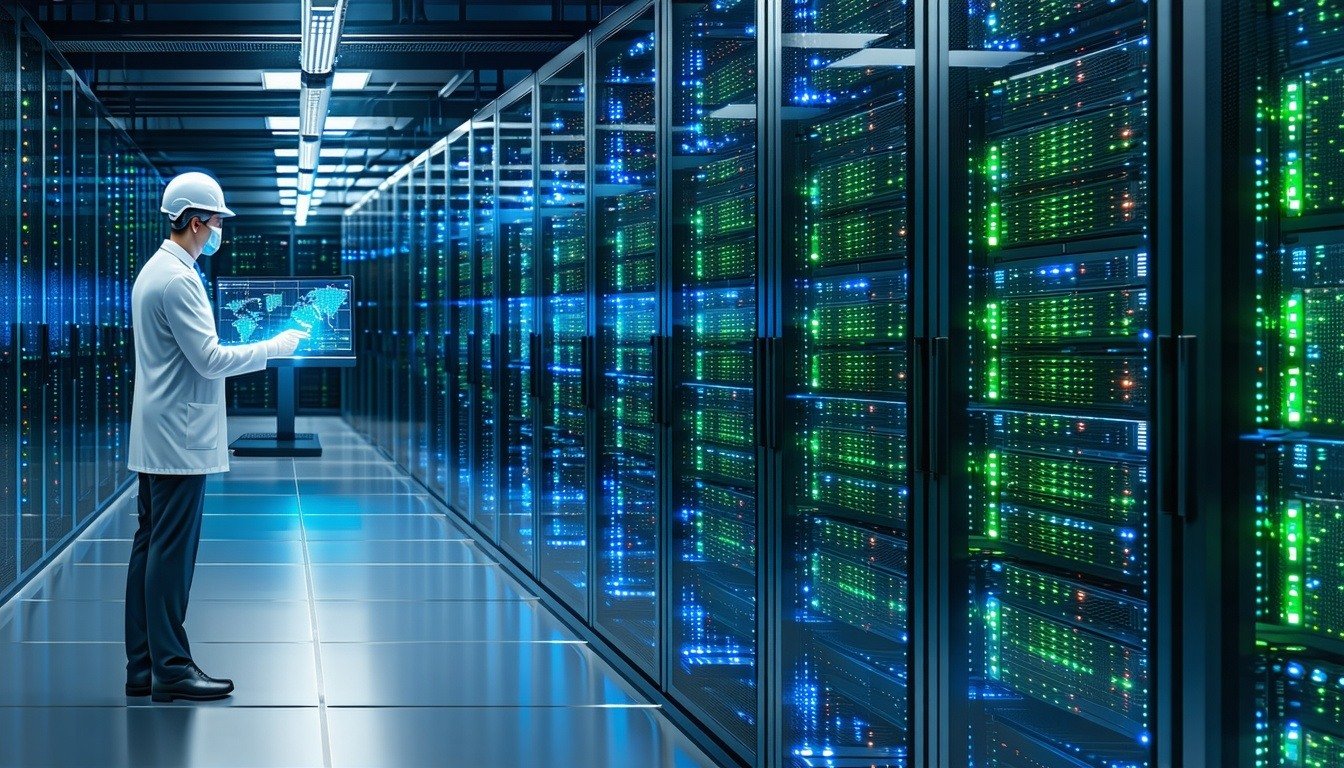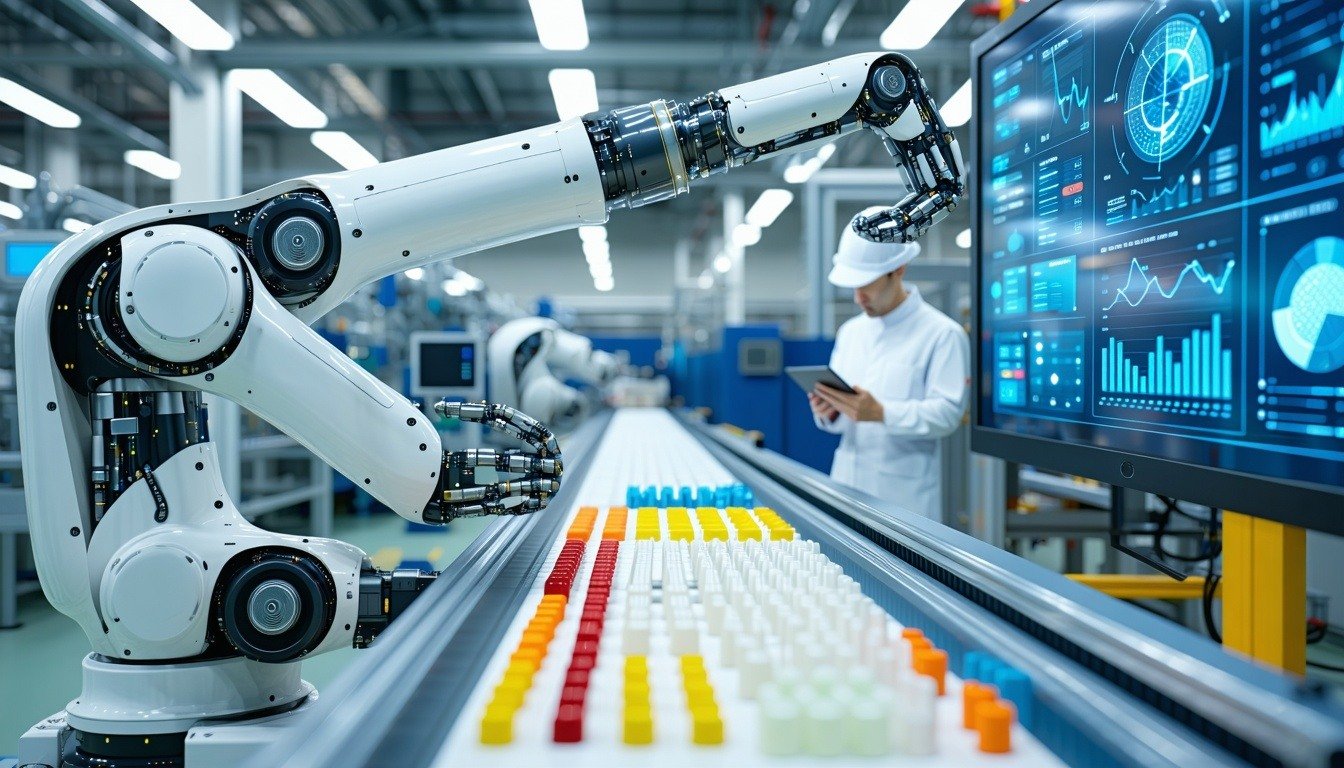Data centers are the backbone of modern business and consumer applications, hosting vast amounts of information in the cloud. Everything from Artificial Intelligence (AI) use cases to online gaming platforms rely on data centers for proper data storage and management. As the world becomes more digitally native, data centers will generate higher Greenhouse Gas (GHG) emissions and deplete more of Earth’s natural resources. This makes the need for green data centers all the more dire as governments race to meet global sustainability goals.
A green data center leverages technologies and strategies that reduce energy consumption, adhere to responsible computing practices, minimize water usage, and promote a circular economy.
Data centers consumed 460 Terrawat Hours (TWH) of electricity in 2022. According to ABI Research's most recent analysis, that number is projected to more than triple by 2030. This increase in power use is driven by the growth in AI, cryptocurrency, and other energy-intensive sectors. Operators can face this sustainability challenge head-on through a holistic approach to decarbonization, as Google and Greenergy are demonstrating.
Data Centers Are Consuming More Energy
As companies increasingly leverage technologies and AI to improve business operations, data center infrastructure must expand to accommodate customers' computing needs..The cloud is essential for storing, sharing, and processing data these technologies rely on and generate. For example, organizations often train Large Language Models (LLMs) in the cloud.
Naturally, the increased demand for data centers will increase the amount of energy their IT equipment will consume. Epitomizing this trend, Google’s data center electricity consumption caused a 37% uptick in Scope 2 emissions in 2023. However, as pointed out later in this post, Google is making significant strides in decarbonizing its data centers.
Growing at a Compound Annual Growth Rate (CAGR) of 14%, data center energy consumption will reach 1,479 Terawatt Hours (TWH) annually by 2030. Computing (e.g., Graphics Processing Units (GPUs)) and cooling currently account for 79% of total energy consumption for data centers, with the remaining 21% contributed by Information Technology (IT) equipment.
.png?width=712&height=339&name=pie-chart-data-center-energy-demand-by-load.%20(2).png)
The International Energy Agency (IEA) reports that data centers accounted for more than 300 metric tons of Carbon Dioxide Equivalent (CO2e) in 2020. Energy consumption is the largest contributor to this. However, other key issues include GHG emissions, heat generation, water usage, improper management of electronic waste, and construction and material use.
To tackle these sustainability challenges, data center operators can leverage green technologies and strategies such as:
- On-site microgrids & offloading
- Data Center Infrastructure Management (DCIM)
- Efficient power distribution systems and hardware
- Building Management Systems (BMSs)
- Efficient cooling systems & airflow management techniques
- Quantum computing
- Virtual servers, edge computing, and decentralized data center consolidation
- Electronics component reuse
- Circular practices (e.g., recycling, water conservation, etc.)
- Asset lifecycle management
- Heat recovery
- Heat reuse/recycling
- Nuclear power
To get started with green data center initiatives, companies can review several green building and energy standards to make their facilities more sustainable. Some of them include the following:
- Environmental Protection Agency (EPA) ENERGY STAR for Data Centers
- The Green Grid PUE Measurement
- ISO 14001:2015 Environmental Management Systems (EMS)
- ISO 50001: Energy Management Systems (EMS)
- U.S. Department of Energy (DOE) Better Buildings Challenge
- Leadership in Energy and Environmental Design (LEED) certification
These green standards provide a framework for constructing data centers sustainably and implementing eco-friendly practices.
Related Content:
Is Nuclear Energy Big Tech’s “Silver Bullet” to Power Energy-Intensive AI Data Centers?
Delta Power’s Bet on Hydrogen Backup Generators Is the Right Call for Data Centers
Number of Data Centers Connected to Heat Reuse by Region
Benefits of Green Data Centers
Some of the expected benefits of building green data centers are outlined below:
- Operational Cost Savings: Green data centers optimize energy efficiency to reduce operational costs and lower energy consumption and heat/electricity expenses.
- Carbon Footprint and GHG Reduction: Green data centers focus on energy and water efficiency, lowering Power Usage Effectiveness (PUE), and using renewable energy sources to reduce carbon emissions.
- Waste Reduction: Environmentally responsible data centers implement waste management practices that minimize disposal and promote recycling and reuse, particularly e-waste.
- Resource Conservation and Sustainability: Green data center operators adopt sustainable cooling technologies (e.g., liquid cooling, water reuse), energy-efficient equipment, and automated power management to help them efficiently meet increasing compute demands.
- Operational Optimization: Green data centers leverage efficient cooling systems, power distribution, and equipment design to improve IT infrastructure performance, reduce downtime, and improve reliability.
How Google and Greenergy Are Leading the Way in Green Data Center Operations
Google Cloud Platform (GCP) is one of the most significant data center operators in the world. As pointed out in an earlier blog post, Google is expanding its cloud infrastructure, with plans to construct several new data center sites in the Asia-Pacific region. ABI Research forecasts GCP to have 160 hyperscale data centers by 2030, making energy reduction a pressing matter. Google’s green data centers use various energy-efficient strategies to minimize emissions. Already, enterprises experience up to 98% reduction in environmental impact when using Gmail.
The tech giant claims its data centers are nearly twice as energy efficient as data centers operated by enterprises. Google achieves this level of sustainability through strategic steps such as using air cooling and creating an effective system for measuring its carbon footprint. Google uses a higher standard for measuring Power Usage Effectiveness (PUE) than The Green Grid’s PUE measurement standards. Even then, the company has just a 1.10 PUE across its entire data center fleet—significantly lower than the 1.58 industry average that Uptime Institute reports.
A key contribution to Google’s sustainable data center progress is its focus on reducing “non-computing” energy consumption, such as cooling and power conversion. Google has shrunk this overhead to just 10%. This translates to more data center resources being allocated for Google services (search engine, products, etc.).
Finally, Google data centers leverage renewable energy to curb the environmental impact. The company averaged 64% carbon-free energy consumption across its data centers in 2023, with the goal to use 100% renewables by 2030.
Another notable green data center operator is Greenergy. The company partnered with Siemens to make its 14,500 square meter data center in Tallinn, Estonia more reliable, secure, and sustainable. Through the use of solutions like BMSs, Energy and Power Management Software (EPMS), chiller plant optimization tools, heat redistribution, AI-based White Space Cooling Optimization (WSCO), and sensorization, the data center achieves 25% more energy efficiency than traditional data centers. Critically, this partnership reduces the carbon footprint generated using digital services in the Baltics.
Looming Challenges Must Be Addressed
Google and Greenergy demonstrate that you can make significant progress in decarbonizing data center operations with the right mindset and technologies. The high upfront costs of investing in green technologies can potentially be offset by the operational cost savings and improved public perception associated with their adoption. Government incentives would also alleviate cost concerns, reducing the financial risk of implementing new technologies.
Download ABI Research’s Building Greener Data Centers to Minimize AI’s Carbon Footprint presentation to fully understand the environmental impact of data centers and the sustainable technologies/best practices to minimize emissions.






